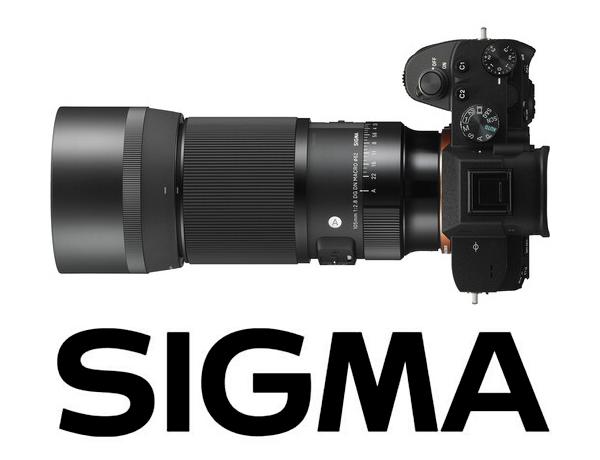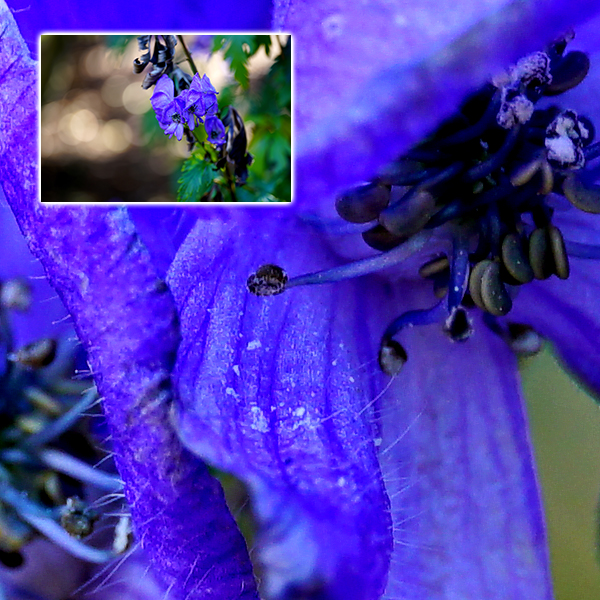Sigma 105mm f/2.8 DG DN Macro Lens Review

Sigma recently introduced the 105mm f/2.8 DG DN macro lens for L mount and Sony FE mount mirrorless cameras. It focuses continuously down to life-size (1:1 reproduction ratio) at the minimum focusing distance of 11.6 inches and offers considerable versatility beyond macro applications. We took a thorough look at the Sigma 105mm f/2.8 DG DN macro lens in a Sony mount for this hands-on review.
 Overview
Overview
Designated as part of Sigma’s popular Art line of accessory lenses, the 105mm f/2.8 is useful as a short, fast telephoto, as a 1:1 macro lens and as a portrait lens. Art lenses are designed to achieve exceptional optical performance and are ideally suited for creative and artistic applications, according to Sigma’s overall vision of lenses.
Macro lenses, by definition, are capable of capturing subjects life-size. An inch worm that’s exactly one inch long will be recorded on the camera’s sensor precisely the same length, i.e., one inch long. We call this 1:1 reproduction, meaning that the subject and its recorded image are the same size. The Sigma 105mm f/2.8 DG DN macro lens achieves this magic 1:1 ratio without an accessory extension tube.

Generally speaking, macro lenses are optimized for close-up performance and, compared to standard lenses, are more capable of capturing flat subjects. Nonetheless, macro lenses on the whole are usually exceptionally sharp at all distances and are often the best lenses offered by any manufacturer. Back in the day, 50mm macro lenses were often used as the normal, everyday lens by film shooters.
The important difference between a 50mm macro lens and a 100mm macro lens is the distance each must be from the subject to attain a 1:1 reproduction ratio. As a rule, when using a 100mm macro instead of a 50mm macro you can be twice as far away from the subject and still achieve the same image. Among other advantages, this gives you more room to arrange lights around the subject. It’s also an important advantage when photographing noxious things like poisonous snakes.

The Sigma 105mm f/2.8 DG DN is designed for full-frame Sony mirrorless cameras, so when used on a Sony mirrorless that has an APS-C sensor (like the Sony Alpha a6400 for example), the effective focal length is a tad longer than 150mm. The f-stop doesn’t change, so the result is a nice, fast 157mm f/2.8 tele that’s great for stage photography, indoor sports, and other subjects.
Specifications

Construction
At 25.2 ounces she’s not a light weight by any measure, but the compact (5.3 by 2.9 inch) body and large, sharply knurled focusing ring combine to create a balanced, stable unit that can be safely handheld even in the close-up range (where depth-of-field shrinks as subject distance decreases).
The Sigma 105mm f/2.8 macro lens incorporates a powerful Hyper-Sonic Motor (HSM) in its focus motor system to achieve precise, quiet AF operation. I found AF operation to be quite fast and I experienced zero focus-seeking in the field. I expect most AF macros to do at least a little focus-seeking, so I was pleasantly surprised by Sigma’s performance.
Interesting small feature, the aperture ring can be set to click or to be smooth. Before you say, “So what?” remember that many (most?) shooters rely on tactile feedback from the aperture ring to know when they’ve clicked to the next f-stop, particularly when the camera is at eyelevel. When shooting video, however, it’s nice to have a free-wheeling aperture ring with no detents or click stops. There’s also a switch to lock the lens diaphragm in the A position for confirmed Aperture Priority operation.
With an eye toward enhanced durability and more versatile outdoor performance, the Sigma 105mm f/2.8 macro lens is dustproof and splash-proof. As we warn about all photo products, even when an item is labeled water resistant (or any language similar) use caution and common sense – dry is always safer than wet when it comes to cameras and lenses.

Optical Design
Featuring an all-new design, the Sigma 105mm f/2.8 DG DN harbors 17 elements in 12 groups with one SLD element. Sigma placed major emphasis on correcting longitudinal chromatic aberration which cannot be muted by the correction functions built into the Sony camera body. The intention of the design is to produce clear images with delicate rendering that are free of color bleeding. Image stabilization is provided by the camera.
For more pleasant bokeh, Sigma’s new 105mm f/2.8 macro is fitted with a 9-blade rounded diaphragm. The combination of large aperture, mid-tele focal length and circular diaphragm empowers users to produce brilliant portraits that pop (i.e., sharp subject practically jumps off of the blurred background) as well as dramatic close-ups with defocused backdrops.

Field Performance
I used the new Sigma 105mm f/2.8 DG DN macro lens on a Sony Alpha a7RII full-frame camera, a machine with which I am intimately familiar. It captures images 7952 x 5304 (42.2 megapixels) and that gives me enough resolution to make critical judgments regarding lens quality.
The Sigma 105-macro lens delivered sharp, bright, color-neutral images shot after shot. I am very pleased with the results. In the beginning I was underestimating the shallowness of the depth-of-field that is present when shooting a 105mm lens wide-open at f/2.8, but once I recognized what was happening I switched to Aperture Priority (from Program Mode) and ruled the day. In fact, in short order I was exploiting the shallow DOF to isolate subjects from their backgrounds—things like brightly colored leaves against gray skies and so forth.
Autofocus was adequately fast and quiet—very quiet. I appreciate the click-or-silent aperture ring and the lock that prevented me from inadvertently drifting away from Auto aperture. Small detail for sure, but I also liked the grippy texture on the included lens hood.
Admittedly the 105mm f/2.8 is on the heavy side at 1.58 pounds, but the Sony FE 90mm f/2.8 Macro G OSS lens ticks in at 1.32 pounds, so it’s probably about where is has to be. That said, I had no problems using the Sigma lens because of it. It balanced nicely with my Sony camera.

Conclusion
If you are looking for an excuse to buy this lens, I’ll give you three. It’s sharp, it delivers awesome performance as a macro lens, and it’s an excellent dedicated portrait lens. The build quality is very good and tactile feedback is positive and convincing.
I believe that every photographer in the world would like to own a high quality macro lens. Some are better off with a 50mm macro for various reasons and some—many I think—fare better with something longer, something in the 90 to 105mm range. Perhaps it’s because it isn’t as easy for me to stoop down as it once was, I find the 105mm macro easier to use when shooting close-ups of subjects like flowers, autumn leaves and venomous insects.
The Sigma 105mm f/2.8 DG DN macro lens is a high quality, well made tool and I believe you will enjoy using it.
Price and Availability
The Sigma 105mm f/2.8 DG DN macro lens for Sony FE full-frame mirrorless and APS-C sensor Sony mirrorless cameras is available from Amazon. Price is $799.
The Sigma 105mm f/2.8 DG DN is also available in L mount from Amazon at the same price.
—Jon Sienkiewicz
(As an Amazon Associate, Shutterbug earns from qualifying purchases linked in this story.)
- Log in or register to post comments

















































